The ASRock Z370 Gaming-ITX/ac Motherboard Review: Mini-ITX with Thunderbolt 3
by Joe Shields on July 13, 2018 9:00 AM EST- Posted in
- Motherboards
- Gaming
- Intel
- ASRock
- Mini ITX
- 802.11ac
- Wi-Fi
- Coffee Lake
- Z370
- i7-8700K
Gaming Performance
AoTS Escalation
Ashes of the Singularity is a Real Time Strategy game developed by Oxide Games and Stardock Entertainment. The original AoTS was released back in March of 2016 while the standalone expansion pack, Escalation, was released in November of 2016 adding more structures, maps, and units. We use this specific benchmark as it relies on both a good GPU as well as on the CPU in order to get the most frames per second. This balance is able to better display any system differences in gaming as opposed to a more GPU heavy title where the CPU and system don't matter quite as much. We use the default "Crazy" in-game settings using the DX11 rendering path in both 1080p and 4K UHD resolutions. The benchmark is run four times and the results averaged then plugged into the graph.
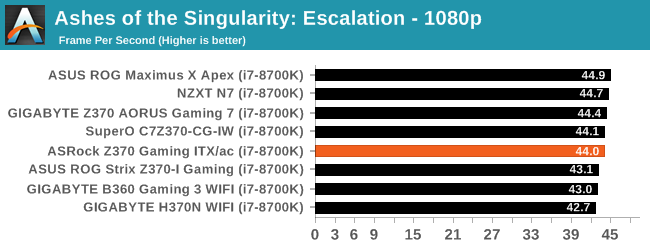
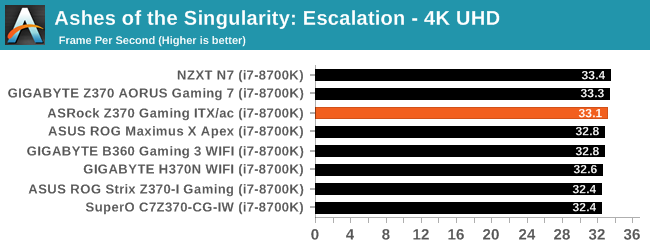
The Gaming-ITX/ac manages to fall right in the middle of this test proving capable as the others are in this title. Our AOTSe results are all VERY close together with ~2 FPS separating both the 1080p and 4K results.
Rise of the Tomb Raider
Rise of the Tomb Raider is a third-person action-adventure game that features similar gameplay found in 2013's Tomb Raider. Players control Lara Croft through various environments, battling enemies, and completing puzzle platforming sections, while using improvised weapons and gadgets in order to progress through the story.
One of the unique aspects of this benchmark is that it’s actually the average of 3 sub-benchmarks that fly through different environments, which keeps the benchmark from being too weighted towards a GPU’s performance characteristics under any one scene.
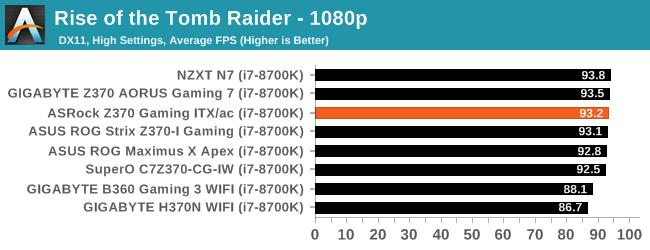
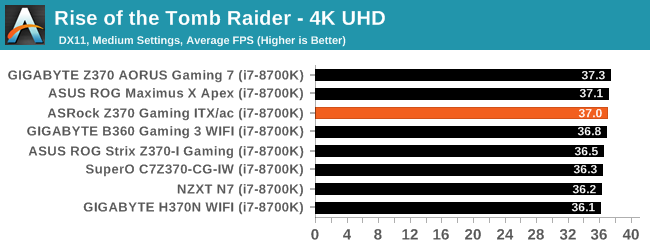
Rise of the Tomb Raider results for the Z370 Gaming-ITX/ac also doesn't show anything out of the ordinary with its results landing at the peak of the bell curve.


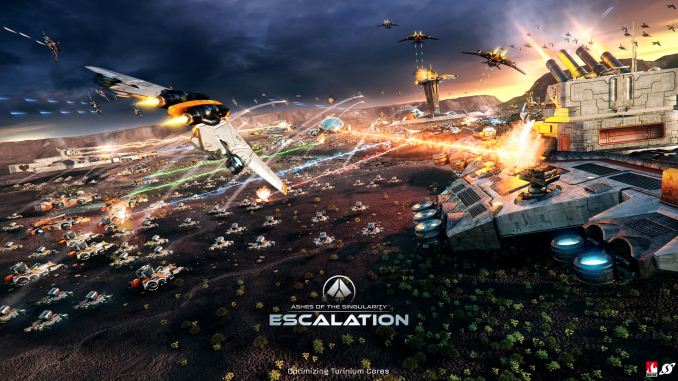
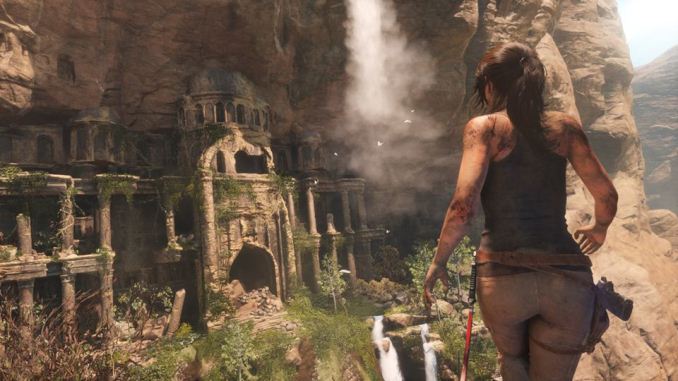








33 Comments
View All Comments
stanleyipkiss - Friday, July 13, 2018 - link
Best buy for any situation right here. Amazing Z370 board.Samus - Saturday, July 14, 2018 - link
Totally upgrading to this from my ASRock H87M-ITX, which has held solid for 4 years with an over locked i5-4670k.The main appeal isn’t just that coffee lake is finally a worthy upgrade from previous generations, especially Haswell, but that platforms simply lacked PCIe m.2 until recently and that’s where the performance gain will be most noticeable. Going from 500MB/sec SSD to 2800MB/sec is huge. And with 12 thread CPU’s to back it up I can’t wait to unrar 8GB 1080p videos in 3 seconds.
n13L5 - Sunday, August 5, 2018 - link
Really? With Cocaine Lake 8-cores and Z390 boards imminent?foxen - Friday, July 13, 2018 - link
minor typo: in the visual inspection when you list the I/O on the back panel, you miss the GigE nic.Gunbuster - Friday, July 13, 2018 - link
Warning to prospective buyers. Today's date is 7/13/2018. Check out the driver and software page for this board. Nearly everything is from 2017.You will not get timely support from ASRock.
ikjadoon - Friday, July 13, 2018 - link
Do you still have this motherboard? I have this board and, for the life of me, I can't figure out what that white 8-pin header does next to two of the SATA ports.https://i.imgur.com/aBTTB07.png (it's missing even in the motherboard manual!)
Thought mine was weird, but even your sample has it--most mysteriously, none of ASRock's other Z370 motherboards have it nor the ASRock Z270 Gaming-ITX/ac!
Isn't space a premium in mini-ITX boards? Why would you leave an extra 8-pin header on such a board? It barely fits anyways between the SATA ports and the front panel I/O header.
ikjadoon - Friday, July 13, 2018 - link
Oh, right: I love this motherboard. Absolutely fantastic: excellent list of full-fat features, runs cool (def. disabled MCE, though), excellent RAM overclocking support, proper 2x2 WiFi, BIOS is complete and full-featured, ASRock updated expeditiously for Spectre/Meltdown (big kudos from me as software support starts to differentiate these commodity products), simple layout, no real gotchas (except the TB3 is only wired as PCIe 2x instead of 4x--but who is honestly driving eGPUs or wild iGPU-heavy docks from a gaming mini-ITX motherboard?!), and the built-in RGB is fun to play with (and syncs nicely with proper lighting).The most minor of cons which some random dude/dudette just has to have, but should be noted for completeness: TB3 is 2x lanes, no USB 3.1 header (though ITX case support is even worse), RGB header is the standard 4-pin and not the fancy RGBW 5-pin, single M.2 slot (but, if you deeply care, you can bifurcate the PCIe x16 and add a $20 PCIe M.2 slot adapter), and the WiFi antenna could be better (a million replacements on Amazon, though, and fine to keep the price down).
esoterikos13 - Friday, July 13, 2018 - link
I have the same board and I have no clue either! LMAOAnandIdiots - Friday, July 13, 2018 - link
No mention of the onboard Thunderbolt 3 controller being the lesser 20Gb/s, single-port version? This a sponsored review or just a place to get shitty, misleading reviews?mkaibear - Friday, July 13, 2018 - link
Doesn't it hang off the DMI3 anyway? So it shares 4xPCIe 3.0 bandwidth with every other I/O on the board except the graphics card?As in, roughly 32Gb/s for everything?
Why would they put a 40Gbs port on it when even in the absolute best case scenario they'd not be able to use it?